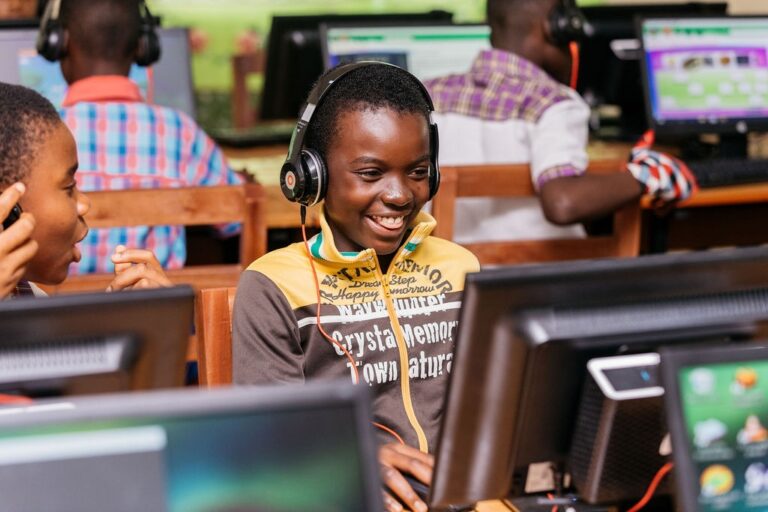By Paul Jun
Your next job title probably doesn’t even exist yet. So what’s the only skill that promises to pay dividends in the future? Your ability to expand your mind.
At the heart of expanding your social graph and reinventing yourself is an unquenchable desire to learn—a mindset that stays fluid and facilitates personal growth. It is the learners, those willing to open their minds and augment their skillsets, who will be poised to succeed in the future.
But how do we foster this desire to learn? Don’t we all want to learn? Who ever says, “I really hate learning new things?” Yet, in the midst of searching for security and comfort, I think we often lose sight of what’s important and enter a sort of tunnel vision that can lead to stagnation. After a long day at work, Netflix sounds more seductive than spending one or two hours diving into a book that challenges you to think deeply about what you do and who you are.
That said, complacency does not beget success. In today’s networked age, companies and jobs rise and fall in a matter of months. That thing you do? There’s now an app for that, for free. Or there will be soon. That job title of yours could change next week. When thinking about our careers, no one is safe.
The concept of getting and holding a job in one industry for decades is outmoded, a byproduct of the industrial mindset. Nowadays it’s not unusual to hear of drastic career changes like a CPA becoming a yoga instructor or someone leaving a job that they had for a decade to pursue their art. These transitions are not only difficult, but they require a mindset that helps the individual be flexible and motivated.
By embracing a student-like mindset and learning to turn self-education into a daily habit, you can hone your current skills and develop new ones while enriching your mind. Then, when the time to adapt arrives, the transitions are less bumpy.
Here are some ways to ignite and sustain a passion for learning:
1. Start with heroes from the past.
—Michel De Montaigne
Having heroes gives you something to live up to, a higher standard. You can pick someone in your field and always point toward them. “That is what they do in times of self-doubt” or “That is what they do every morning to make sure they get their work done.” It’s not about constantly comparing to make yourself feel unworthy or unproductive, but rather using a model of aspiration, something to motivate you to find your own rhythm and exert a bit more effort.
Many of my heroes aren’t alive, and if they are, I have not met them in person (yet). Their teachings are laid out in books, interviews, and articles, and their quotes are scattered throughout my notebook. Whenever I have moments of confusion or self-doubt, I re-read quotes or passages from these books to center myself.
Wouldn’t it be great to have a mentor that slaps your hand when you reach into the cookie jar or someone to say, “Hey, I’ve been in this situation before, here’s what you should do?” Truth is, you may never get this kind of mentorship, and waiting for someone to pick you is the same as waiting for something great to happen. But you can actively choose your heroes, study their work and journeys, and identify the specific elements that make them great and utilize those lessons in your own life. What’s more, you can learn who inspired them and expand your knowledge from there.
2. Take advantage of free educational resources.
—Seth Godin
Technology has transformed us into excellent gatherers of information. From books, podcasts, blogs, online courses, and tools that provide access to whomever you’re trying to connect with, you can study any subject. The access to tools that can bolster our desire to learn is incomparable to any other time in history. Picture your great-great-grandparents learning that you have access to all this information. They would likely be stunned that you didn’t spend all day reading and learning.
As an experiment, I started drawing in December 2013. My first thought was, “I should take a few electives at my university” but one course would have cost me close to $1,000. Instead, I searched online and found a portrait-drawing course for $20 on Skillshare. I went on YouTube and searched for “Drawing 101 tips” and studied the videos I found relentlessly. I followed artists on Instagram, studied their sketches and watched their time-lapse videos. I emailed a few artists and asked questions. I purchased books and skimmed through them. But above all, I did the work. The knowledge that I obtained from these various sources improved my mindset and methodology.
The tools and platforms that facilitate self-directed learning are growing by the day. Websites like CreativeLive, Skillshare, and Khan Academy provide content that is invaluable to our education. It’s easy to overlook the value of the tools and options that we now have compared to 20 years ago. Take advantage of them.
3. Explore unrelated subjects.
—Sir Ken Robinson
Say you’re a graphic designer. Why not study something like Greek architecture or fashion? Or let’s say you’re a fitness coach. Why not study public speakers or read biographies on famous sports coaches?
One of my favorite joys in learning is studying seemingly unrelated subjects and then connecting them to my interests. Knowing that my mind is being exercised to connect the dots, even if it’s a subject that’s unfamiliar, allows me to unearth new insights and develop a richer understanding. It helps with cross-pollinating ideas, exercising creativity, and exploring the edges.
If you find yourself devouring the same kind of information constantly, change it up. Dive into subjects that you’re unfamiliar with and extract insights that have potential for connection. It may not be important now, but who knows what frontiers will open up. Lifelong learners collect dots, but they are even better at connecting them.
4. Make learning a habit.
—Joi Ito
A desire to learn is a fruitful asset that will fuel you throughout your life. Without this unquenchable desire to grow our understanding of ourselves and the world around us, we stagnate. We become comfortable with what we know and may feel that there isn’t anything else to learn. Of course, that kind of thinking is poisonous: there is always something that we can learn that will improve how we lead our lives and do our work.
Learning isn’t everything, however. On top of all these practices, it’s also important that we engage, discuss, and experiment with the knowledge that we obtain.
In the words of the Roman Stoic philosopher, Seneca, “If wisdom were offered me on the one condition that I should keep it shut away and not divulge it to anyone, I should reject it. There is no enjoying the possession of anything valuable unless one has someone to share it with.”
Learning is the lifeblood of a fruitful career. And it’s available to you right now. It’s neither a personality trait nor a gift. It takes humility to admit that we have much to learn, but this realization can be a catalyst to the kind of lifelong learning that helps us improve, thrive, and contribute in a way that is deeply meaningful to ourselves and others.
How to Take Control of Your Quest for Learning:
Organize a group study with co-workers or friends:
Everyday I try to engage in a conversation that explores or questions the things that I’ve learned. How is it useful and why? How can I apply it to my life? Why do I find this important or useful? What are the elements and what am I failing to see or understand? You can do this with anyone. Carve an hour out of your day to simply discuss something that you learned or found interesting. Get weekly drinks or host dinner parties with people you respect. Share a passage of an article or an idea that challenges your current beliefs. See how other people think about it so you can expand your thinking.
Apply what you learn:
Reading information prepares your mind, but are you actually utilizing it in your daily life? When you read something that can improve your work, do you apply it and experiment? Learning is about improving the way you live and how you make decisions. It would be foolish to collect knowledge without implementing it.
Question everything:
My friend sent me a funny meme, and I replied with a quote that I had saved in my notebook. But for some strange reason, a part of me wanted to research the quote I was sharing. I never had that urge before, but I’m glad I did. Thirty minutes later, I found out that the quote wasn’t even true—the actor never said it. How did I find out? She clarified it in an interview, and that interview was on the second page of Google. Weigh everything. Do some research on your own. Keep asking why. Take the individual parts and examine them, try to understand how each part functions and supplements one another.
Share what you’ve learned:
After I finish books, I write about what I’ve learned on my blog. It’s a way for me to practice connecting the dots, to examine my pattern of thinking and my level of comprehension. I can take the information gained from the book and connect it to other notes that I have saved. You don’t have to share it publicly if you don’t want to. You can keep a journal for yourself, sort of like an archive of your own thinking. The purpose of this exercise is to be aware of how you’re thinking about a subject, and to find the weak spots that need attention and development.
Keep a commonplace book:
Right now I can slide my thumb across my phone, tap on Evernote, and access an archive of all my learning. From quotes, anecdotes, metaphors, studies, and links to videos, I have an organized database of knowledge and wisdom. This is my favorite tool for self-education.
Whenever I highlight something in a book or hear an amazing story in an interview, I write it down, along with the author’s name, source, and page number. I write one or two sentences before the quote stating what it is about and what other subjects I can connect it with. The idea is that you want to have something that is immediately accessible and organized. If I’m having a bad day I can search in my file under “Dealing With Adversity” and have a wide range of perspectives and solutions from a variety of thinkers. It’s like having all your teachers and mentors close by.



![[Preliminary Report] CRNA Collaborative Research for Exploring Factors Nurturing"Happy and Resilient" Children among Asian Countries](https://equity-ed.net/wp-content/uploads/2024/09/1725672182698.jpg)


